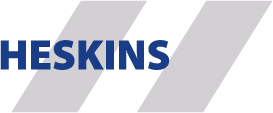5S Optimisation & The Difference Between Painted Aisle Marking & Line Marking Tape
5S
A 5S solution in the workplace means a more efficient workplace. Read how to achieve 5S and also read about PermaStripe and painted line marking….
A 5S solution in your workplace, be it factory, warehouse or any other premises, means a more efficient and organised working environment. This is not only for your products, but for your employees too, as having a working environment that meets 5S standards increases productivity, and reduces errors. For those who do not have a 5S solution in place, firstly, you may ask, what is a 5S solution? Well, a 5S solution is a methodology, developed in Japan, initially using a list of 5 Japanese words, seiri, seiton, seiso, seiketsu, and shitsuke, to help organise your workplace to achieve success. Once these words have been translated, the 5S solution has five primary phases to help you create exactly what I explained above, and those are;
- Sorting (Seiri)
- Straightening (Seiton)
- Systematic cleaning (Seiso)
- Standardising (Seiketsu)
- Sustaining (Shitsuke)
Sorting helps eliminate waste in the process. By placing certain elements in storage or discarding them can mean less clutter, and free up valuable space for other items. Straightening ensures that everything you require is in easy to access areas, and are clearly marked to avoid confusion. Systematic cleaning will ensure a clean and tidy workplace, and then you base everything upon that moment when you have finished cleaning and use strict discipline to ensure it is not reverted to its former state or does not ever reach an unsatisfactory level. Keeping a good standard ensures when/if spills do happen, they dealt with swiftly and effectively. Standardising means you can make sure all work processes will become consistent. This can vary greatly depending on the industry. Sustaining the five practices above gives your business new regulations in the way it operates, and sustaining these principles ensures that the workplace will not revert to old habits. There is also safety, security and satisfaction, but these should all be a bi-product of the initial 5, and an organised, efficient workplace, is happy, and to reiterate safe workplace.
Line Marking Tape vs Painted Aisle Marking
Line marking is vital in a warehouse when it comes to meeting 5S standards, as ensuring areas are marked correctly makes things organised and safe, a major component of the ‘straightening’ process. What line marking you choose however requires consideration; as to how you operate in your workplace will depend on what decision you make on this line-marking paint
The mainline marking products you can find are self-adhesive tape and paint. Both are a very efficient product in terms of clearly organising your workplace, however, paint does come with its drawbacks. Painting lines requires a sufficient amount of downtime, which isn’t so bad if you aren’t constantly using departments, though I think these days those luxuries (if you can call them that) are rare, as being cost-efficient requires squeezing every bit of productivity out of each area or facility. From stencilling to actual painting, drying time and possible fumes can waste precious time and end up making the process, although worthwhile, more costly than necessary.
Self-adhesive tape carries more benefits out of the two in most tests; applied instantly, and ready almost immediately, in most cases, with a short cease in production. In some cases, surface cleaning is required to ensure an efficient bond between adhesive and surface, which makes this the only reason for downtime, albeit at a much shorter extent than paint, as depending on the time of year, this could be literally minutes from cleaning to application.
Paint requires masking, or the use of very expensive machines to achieve the kind of finish that line marking tape gives. As mentioned previously, depending on how your premises operates will help ascertain which product is most suited to your need. For those who rarely change their operation, paint is a candidate as that downtime required to put the markings in place will only rarely disrupt operations, but if operations are modified frequently, then not only does it mean repeating the process again, removing the old lines adds time on to an already time-consuming operation.
Line marking tape can be removed quickly and easily, with no breaks in the material, so removing it is even easier than applying it, though reusing it would most likely not be possible due to the second bond not being as strong, due to loss of adhesion by actual removal of adhesive or contamination from grit or grease. Durability can be an issue with paint, as overtime, heavy foot traffic can erode a floors surface, wearing away paint and making it look messy, or require touch-ups, which means more downtime. Most line marking tape is durable, developed over time to withstand heavy foot traffic, and in some cases, constant forklift traffic, receiving heavy scrapes and ‘scuffs’.
Line marking paint has definite positive points, and in clean environments whose operation does not deviate too much, it could be a possible consideration when it comes to optimising your premises to meet 5S standards. Line marking tape ticks many more boxes, however, with it being durable and easy to optimise your premises with, combined with the efficiency of application and durability in most demanding business environments, particularly warehouses and factories.
For more information, visit our PermaStripe website or contact the sales team via phone or live chat. Alternatively, complete the contact us form and we will get back to you as soon as possible.
Want to Stay Up to Date?
Subscribe to future blog posts and newsletters below.
